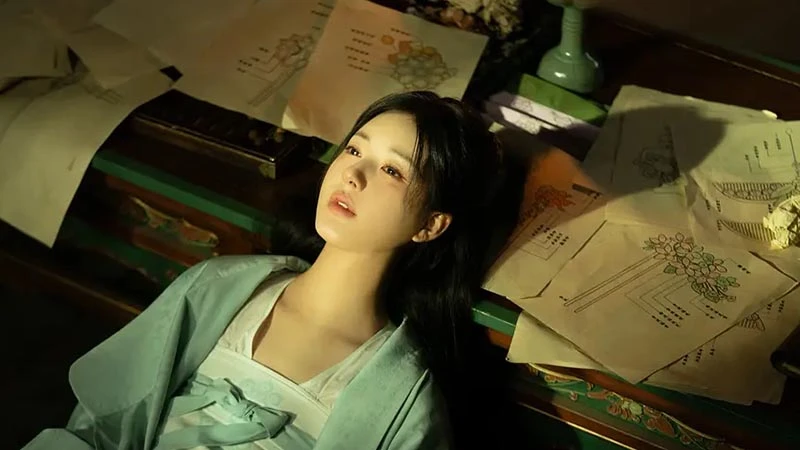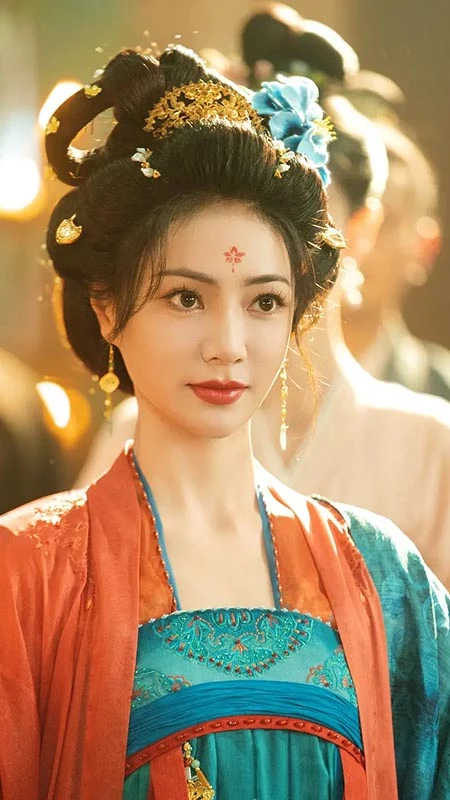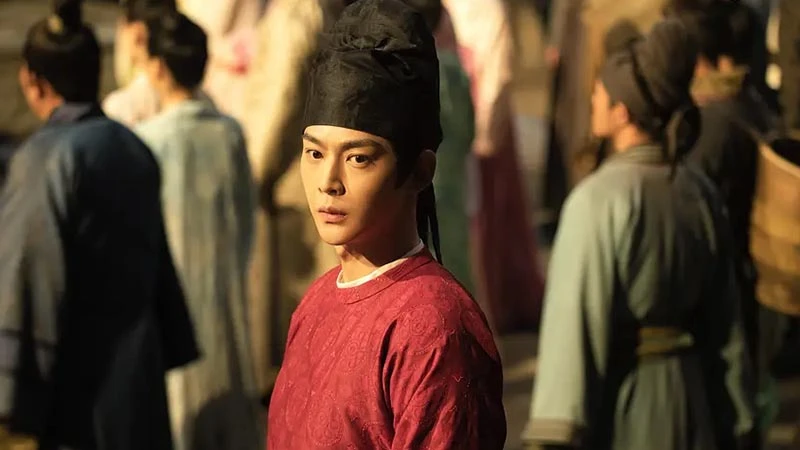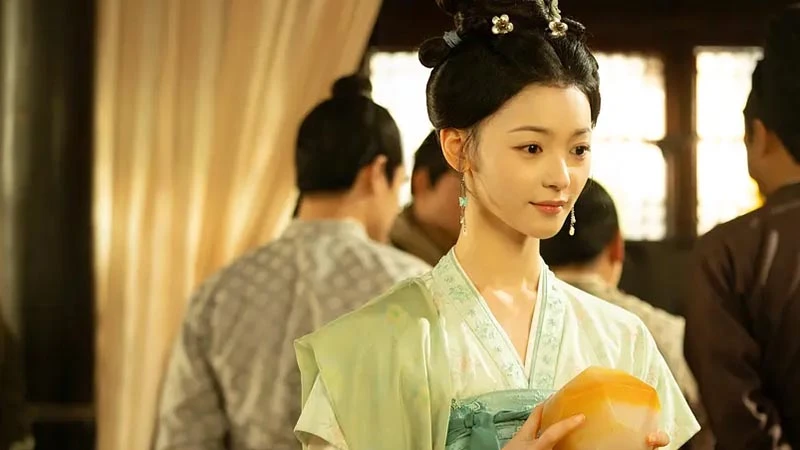In the bustling world of Chinese historical dramas, where palace intrigues and royalty tales dominate, The Story of Pearl Girl (珠帘玉幕) breaks through with a refreshing narrative. Directed by the talented Xie Ze (谢泽), this captivating series redefines the genre by focusing on the journey of a downtrodden woman rising from slavery to empowerment. Based on the novel Prequel to Kunshan Jade (昆山玉之前传) by Tan Tianyin (谈天音), the show paints a rich tapestry of resilience, commerce, and human emotion.
The drama's protagonist, Duanwu (端午), portrayed by Zhao Lusi (赵露思), begins her story as a pearl-diving slave. After enduring unimaginable hardships, she escapes her brutal life and crosses paths with two complex characters: Yanzi Jing (燕子京), a vengeful merchant played by Liu Yuning (刘宇宁), and Zhang Jinran (张晋然), a gentleman with secrets, played by Tang Xiaotian (唐晓天). The intertwining of personal quests and grand ambitions sets the stage for an emotionally charged and action-packed series that keeps audiences enthralled.

Redefining the Female Lead
One of the most striking elements of The Story of Pearl Girl is its bold departure from the typical female leads of historical dramas. Instead of portraying princesses or noblewomen, Xie Ze introduces viewers to a protagonist who begins her journey as the lowest of the low—a slave. Her transformation from Duanwu to Su Muzhe (苏幕遮) symbolizes a fight for survival and freedom, driven by grit and an indomitable spirit.
“Her growth isn't instantaneous,” Xie Ze remarked in interviews. “She begins as a hollow shell, merely existing. Through loss, betrayal, and witnessing human tragedy, her inner resilience is ignited, pushing her to challenge societal norms and pursue justice.”
Duanwu's story resonates deeply because it mirrors struggles that many face—finding purpose, battling adversity, and redefining one's identity. Her evolution reflects not just personal growth but a broader commentary on societal expectations and the role of women in history.
Creating an immersive world was crucial for the success of The Story of Pearl Girl. Xie Ze and his team prioritized authenticity, meticulously recreating historical settings that transport viewers to another era. From the hauntingly oppressive pearl-diving camps to the bustling vibrancy of ancient marketplaces, every detail is crafted to evoke emotional depth.
The production took an unconventional approach to filming underwater scenes, choosing to construct a 1:1 replica of the underwater landscapes of Hepu (合浦). This ambitious effort allowed for stunning visuals and a visceral portrayal of the harsh realities faced by pearl divers. “We even changed the water every two days to maintain its purity,” Xie Ze revealed. This attention to detail not only enhanced the aesthetic but also ensured the safety and comfort of the cast.
Similarly, the ship interiors, divided into cramped lower decks for slaves and more luxurious upper decks, symbolize the rigid social hierarchies of the time. The physical space mirrors Duanwu’s journey, as her ascent to freedom and success parallels her transition from the suffocating bottom levels to the brighter, more open spaces above.
Intricately Layered Characters and Plotlines
Beyond its compelling protagonist, The Story of Pearl Girl thrives on its multi-dimensional characters and interwoven story arcs. Each character, whether primary or supporting, brings a unique perspective to the narrative, contributing to its richness and complexity. Yanzi Jing, for instance, is more than just a merchant; his quest for revenge against those who wronged him provides a powerful counterpoint to Duanwu's search for freedom. Similarly, Zhang Jinran's noble demeanor masks a depth of struggles that unravel as the story progresses.
Director Xie Ze deliberately avoids relying on lengthy monologues or expository dialogue to convey these complexities. Instead, he uses actions and situations to reveal character development and relationships. For instance, Yanzi Jing's subtle gestures of trust and Zhang Jinran's quiet sacrifices highlight their internal conflicts and evolving bonds with Duanwu.
The show also incorporates broader themes, such as the power dynamics within ancient trade systems and the interplay of personal ambition with societal constraints. Courtroom intrigues, merchant rivalries, and the ever-present shadow of betrayal create a fast-paced yet thoughtful narrative. As Xie Ze aptly described, “The pacing feels like a game—quick, with challenges and upgrades at every stage. But at its core, the story is about the internal and external forces that shape our choices.”
One of the most fascinating aspects of The Story of Pearl Girl is its ability to connect historical storytelling with modern sensibilities. The drama's central theme—women carving out their place in a male-dominated world—resonates strongly in today’s social context. Duanwu’s transformation from a powerless slave to a savvy entrepreneur reflects a universal desire for autonomy and recognition.
The series also draws subtle parallels to modern commercial practices, such as the “Qionghua Meeting” (琼花会), a fictionalized event that resembles contemporary business expos or talent shows. This blend of realism and creativity makes the show relatable to both domestic and international audiences, ensuring its appeal across cultural boundaries.

Heziqun Hanfu
A Feast for the Eyes
The visual brilliance of The Story of Pearl Girl is a testament to Xie Ze’s dedication to high-quality production. The underwater scenes, with their ethereal beauty and underlying tension, set the tone for the show’s thematic contrasts: freedom versus confinement, beauty versus brutality. These scenes not only establish the perilous world of pearl diving but also metaphorically reflect Duanwu’s struggles.
In addition to the underwater landscapes, the series showcases intricate costumes and authentic props that reflect the social and economic diversity of the era. The bustling markets, ornate jewelry workshops, and austere ship interiors all contribute to a fully realized world. Even the lighting—soft and golden in moments of triumph, harsh and shadowy in scenes of conflict—enhances the emotional resonance of the story.


